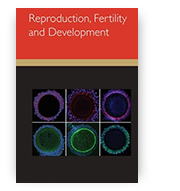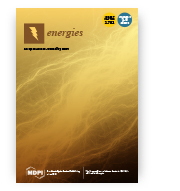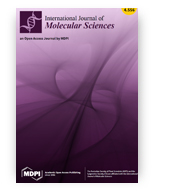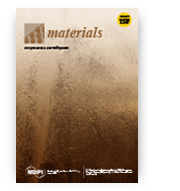Probability estimation of the city's energy efficiency improvement as a result of using the phase change materials in heating networks
Marta Skiba, Maria Mrówczyńska, Małgorzata Sztubecka, Anna Bazan-Krzywoszańska, Jan K. Kazak, Agnieszka Leśniak, Filip Janowiec
Energy
 One of the problems in cities is improving energy efficiency. Energy consumption and the efficient use of district heating networks affect the environment, society, and economy. Modern materials to increase buildings’ energy efficiency become necessary. The use of phase change materials (PCM) is a current issue and many researchers’ interest. PCM reduces energy consumption in buildings due to their ability to absorb and release energy. PCM use seems to be highly justified as regards energy efficiency policymaking considering the city’s investment scale. Therefore, research was undertaken on the possibility of reducing energy consumption in the city by using PCM in municipal heating networks, as those for which planning can be carried out systemically. The research’s original element is integrating geographic systems with artificial intelligence and statistical methods to estimation the probability of improving buildings’ energy efficiency in urban areas based on an identified set of criteria of an interdisciplinary type. The proposed innovative approach was used to analyze the medium-sized city located in Eastern Europe. The results showed that buildings could be classified according to the probability of energy improvement at the limit of 30%. Suggestions were made for adapting the proposed method to more general cases.
One of the problems in cities is improving energy efficiency. Energy consumption and the efficient use of district heating networks affect the environment, society, and economy. Modern materials to increase buildings’ energy efficiency become necessary. The use of phase change materials (PCM) is a current issue and many researchers’ interest. PCM reduces energy consumption in buildings due to their ability to absorb and release energy. PCM use seems to be highly justified as regards energy efficiency policymaking considering the city’s investment scale. Therefore, research was undertaken on the possibility of reducing energy consumption in the city by using PCM in municipal heating networks, as those for which planning can be carried out systemically. The research’s original element is integrating geographic systems with artificial intelligence and statistical methods to estimation the probability of improving buildings’ energy efficiency in urban areas based on an identified set of criteria of an interdisciplinary type. The proposed innovative approach was used to analyze the medium-sized city located in Eastern Europe. The results showed that buildings could be classified according to the probability of energy improvement at the limit of 30%. Suggestions were made for adapting the proposed method to more general cases.
10.1016/j.energy.2021.120549
Transscrotal stimulation of the testes and epididymides improves urethral sperm collection in domestic cats
Sylwia Prochowska, Wojciech Niżański
Reproduction Fertility and Development
 Urethral catheterisation after medetomidine administration is the method of choice for semen collection in cats, but it yields variable results. This study tested whether scrotal manual stimulation can improve urethral sperm collection in domestic cats. The study was performed on 20 male cats, from which two urethral semen samples were collected, one before and one after 2 min of transscrotal finger massage of the testes and epididymides. Both sperm samples were assessed for total sperm count and motility using computer-aided sperm analysis, viability and morphology (eosin–nigrosin staining). The transscrotal manual stimulation allowed a significantly higher number of spermatozoa to be obtained (P = 0.0015). Viability was similar before and after the stimulation (median 92% and 90.5%), whereas the number of motile (median 60% and 70%) and morphologically normal (median 17% and 30.5%) spermatozoa was higher in the second sample (P = 0.03 and P = 0.002 respectively), which confirms that transscrotal massage induced the expulsion of a fresh pool of spermatozoa into the urethra. Transscrotal stimulation of the testes and epididymides significantly improves urethral semen collection in domestic cats and can be easily introduced into clinical practice.
Urethral catheterisation after medetomidine administration is the method of choice for semen collection in cats, but it yields variable results. This study tested whether scrotal manual stimulation can improve urethral sperm collection in domestic cats. The study was performed on 20 male cats, from which two urethral semen samples were collected, one before and one after 2 min of transscrotal finger massage of the testes and epididymides. Both sperm samples were assessed for total sperm count and motility using computer-aided sperm analysis, viability and morphology (eosin–nigrosin staining). The transscrotal manual stimulation allowed a significantly higher number of spermatozoa to be obtained (P = 0.0015). Viability was similar before and after the stimulation (median 92% and 90.5%), whereas the number of motile (median 60% and 70%) and morphologically normal (median 17% and 30.5%) spermatozoa was higher in the second sample (P = 0.03 and P = 0.002 respectively), which confirms that transscrotal massage induced the expulsion of a fresh pool of spermatozoa into the urethra. Transscrotal stimulation of the testes and epididymides significantly improves urethral semen collection in domestic cats and can be easily introduced into clinical practice.
10.1071/RD21010
The Effects of Hydropower Plants on the Physicochemical Parameters of the Bystrzyca River in Poland
Paweł Tomczyk, Mirosław Wiatkowski
Energies
 Currently, the literature lacks comprehensive studies on the impact of hydropower plants (HPs) on the environment, including studies focused on the physicochemical parameters of water. The aim of the article is to verify the current state of knowledge on the impact of run-of-river HPs on 17 physicochemical parameters of water. The article is in line with the recommendations of the European Union that the member states, under the common energy policy, should increase the share of renewable energy sources in the energy and perform environmental impact assessments of such facilities. As a result of the analysis carried out on three HPs (Sadowice, Skałka and Marszowice) located on the Bystrzyca River (a tributary of the Odra River in Poland), it was found that HPs affect the selected physicochemical parameters of the water, i.e., (p < 0.05): electrolytic conductivity (EC; Skałka, Marszowice HPs), pH (Skałka, Marszowice HPs); nitrate nitrogen (NO3 -N; Marszowice HP), dissolved oxygen (DO; Marszowice HP) and ammonium nitrogen (NH4 -N; Marszowice HP). The largest (>5%), statistically significant mean cumulative effect below Marszowice HP concerned NH4 -N (−27.83%), DO (+14.04%) and NO3 -N (+5.50%). In addition, it was observed that the effect of HPs increases in direct proportion to the damming height, and that run-of-river HPs have a lesser impact on the physicochemical parameters’ values than in storage HPs. Our results were in accordance with those of other scientists in terms of the increase in DO, the decrease in EC, and the decrease in total phosphorus concentrations below HPs.
Currently, the literature lacks comprehensive studies on the impact of hydropower plants (HPs) on the environment, including studies focused on the physicochemical parameters of water. The aim of the article is to verify the current state of knowledge on the impact of run-of-river HPs on 17 physicochemical parameters of water. The article is in line with the recommendations of the European Union that the member states, under the common energy policy, should increase the share of renewable energy sources in the energy and perform environmental impact assessments of such facilities. As a result of the analysis carried out on three HPs (Sadowice, Skałka and Marszowice) located on the Bystrzyca River (a tributary of the Odra River in Poland), it was found that HPs affect the selected physicochemical parameters of the water, i.e., (p < 0.05): electrolytic conductivity (EC; Skałka, Marszowice HPs), pH (Skałka, Marszowice HPs); nitrate nitrogen (NO3 -N; Marszowice HP), dissolved oxygen (DO; Marszowice HP) and ammonium nitrogen (NH4 -N; Marszowice HP). The largest (>5%), statistically significant mean cumulative effect below Marszowice HP concerned NH4 -N (−27.83%), DO (+14.04%) and NO3 -N (+5.50%). In addition, it was observed that the effect of HPs increases in direct proportion to the damming height, and that run-of-river HPs have a lesser impact on the physicochemical parameters’ values than in storage HPs. Our results were in accordance with those of other scientists in terms of the increase in DO, the decrease in EC, and the decrease in total phosphorus concentrations below HPs.
10.3390/en14082075
Sex Hormone Binding Globulin (SHBG) Mitigates ER Stress in Hepatocytes In Vitro and Ex Vivo
Katarzyna Kornicka-Garbowska , Lynda Bourebaba, Michael Röcken, Krzysztof Marycz
Cells
 Despite multiple research studies regarding metabolic syndrome and diabetes, the full picture of their molecular background and pathogenies remains elusive. The latest studies revealed that sex hormone-binding globulin (SHBG)—a serum protein released mainly by the liver—may participate in metabolic dysregulation, as its low serum level correlates with a risk for obesity, metabolic syndrome, and diabetes. Yet, the molecular phenomenon linking SHBG with these disorders remains unclear. In the presented study, we investigate how exogenous SHBG affects metabolically impaired hepatocytes with special attention to endoplasmic reticulum stress (ER stress) and lipid metabolism both in vitro and ex vivo. For that reason, palmitate-treated HepG2 cells and liver tissue samples collected post mortem were cultured in the presence of 50 nM and 100 nM SHBG. We found that SHBG protects against ER stress development and its progression. We have found that SHBG decreased the expression levels of inositol-requiring enzyme 1 (IRE1α), activating transcription factor 6 (ATF6), DNA damage-inducible transcript 3 (CHOP), and immunoglobulin heavy chain-binding protein (BIP). Furthermore, we have shown that it regulates lipolytic gene expression ex vivo. Additionally, herein, we deliver a novel large-animal model to study SHBG in translational research. Our data provide new insights into the cellular and molecular mechanisms by which SHBG modulates hepatocyte metabolism and offer a new experimental approach to study SHBG in human diseases.
Despite multiple research studies regarding metabolic syndrome and diabetes, the full picture of their molecular background and pathogenies remains elusive. The latest studies revealed that sex hormone-binding globulin (SHBG)—a serum protein released mainly by the liver—may participate in metabolic dysregulation, as its low serum level correlates with a risk for obesity, metabolic syndrome, and diabetes. Yet, the molecular phenomenon linking SHBG with these disorders remains unclear. In the presented study, we investigate how exogenous SHBG affects metabolically impaired hepatocytes with special attention to endoplasmic reticulum stress (ER stress) and lipid metabolism both in vitro and ex vivo. For that reason, palmitate-treated HepG2 cells and liver tissue samples collected post mortem were cultured in the presence of 50 nM and 100 nM SHBG. We found that SHBG protects against ER stress development and its progression. We have found that SHBG decreased the expression levels of inositol-requiring enzyme 1 (IRE1α), activating transcription factor 6 (ATF6), DNA damage-inducible transcript 3 (CHOP), and immunoglobulin heavy chain-binding protein (BIP). Furthermore, we have shown that it regulates lipolytic gene expression ex vivo. Additionally, herein, we deliver a novel large-animal model to study SHBG in translational research. Our data provide new insights into the cellular and molecular mechanisms by which SHBG modulates hepatocyte metabolism and offer a new experimental approach to study SHBG in human diseases.
10.3390/cells10040755
Quantitative Control of Early Flowering in White Lupin (Lupinus albus L.)
Sandra Rychel-Bielska, Anna Surma, Wojciech Bielski, Bartosz Kozak, Renata Galek, Michał Książkiewicz
International Journal of Molecular Sciences
 White lupin (Lupinus albus L.) is a pulse annual plant cultivated from the tropics to temperate regions for its high-protein grain as well as a cover crop or green manure. Wild populations are typically late flowering and have high vernalization requirements. Nevertheless, some early flowering and thermoneutral accessions were found in the Mediterranean basin. Recently, quantitative trait loci (QTLs) explaining flowering time variance were identified in bi-parental population mapping, however, phenotypic and genotypic diversity in the world collection has not been addressed yet. In this study, a diverse set of white lupin accessions (n = 160) was phenotyped for time to flowering in a controlled environment and genotyped with PCR-based markers (n = 50) tagging major QTLs and selected homologs of photoperiod and vernalization pathway genes. This survey highlighted quantitative control of flowering time in white lupin, providing statistically significant associations for all major QTLs and numerous regulatory genes, including white lupin homologs of CONSTANS, FLOWERING LOCUS T, FY, MOTHER OF FT AND TFL1, PHYTOCHROME INTERACTING FACTOR 4, SKI-INTERACTING PROTEIN 1, and VERNALIZATION INDEPENDENCE 3. This revealed the complexity of flowering control in white lupin, dispersed among numerous loci localized on several chromosomes, provided economic justification for future genome-wide association studies or genomic selection rather than relying on simple marker-assisted selection.
White lupin (Lupinus albus L.) is a pulse annual plant cultivated from the tropics to temperate regions for its high-protein grain as well as a cover crop or green manure. Wild populations are typically late flowering and have high vernalization requirements. Nevertheless, some early flowering and thermoneutral accessions were found in the Mediterranean basin. Recently, quantitative trait loci (QTLs) explaining flowering time variance were identified in bi-parental population mapping, however, phenotypic and genotypic diversity in the world collection has not been addressed yet. In this study, a diverse set of white lupin accessions (n = 160) was phenotyped for time to flowering in a controlled environment and genotyped with PCR-based markers (n = 50) tagging major QTLs and selected homologs of photoperiod and vernalization pathway genes. This survey highlighted quantitative control of flowering time in white lupin, providing statistically significant associations for all major QTLs and numerous regulatory genes, including white lupin homologs of CONSTANS, FLOWERING LOCUS T, FY, MOTHER OF FT AND TFL1, PHYTOCHROME INTERACTING FACTOR 4, SKI-INTERACTING PROTEIN 1, and VERNALIZATION INDEPENDENCE 3. This revealed the complexity of flowering control in white lupin, dispersed among numerous loci localized on several chromosomes, provided economic justification for future genome-wide association studies or genomic selection rather than relying on simple marker-assisted selection.
10.3390/ijms22083856
Extended Residual-State Creep Test and Its Application for Landslide Stability Assessment
Deepak R. Bhat, Janusz V. Kozubal, Matylda Tankiewicz
Materials
 This paper contains the results of a newly developed residual-state creep test performed to determine the behavior of a selected geomaterial in the context of reactivated landslides. Soil and rock creep is a time-dependent phenomenon in which a deformation occurs under constant stress. Based on the examination results, it was found that the tested clayey material (from Kobe, Japan) shows tertiary creep behavior only under shear stress higher than the residual strength condition and primary and secondary creep behavior under shear stress lower or equal to the residual strength condition. Based on the data, a model for predicting the critical or failure time is introduced. The study traces the development of the limit state based on the contact model corresponding to Blair’s body. The time to occurrence of the conditions necessary for unlimited creep on the surface is estimated. As long-term precipitation and infiltrating water in the area of the landslides are identified as the key phenomena initiating collapse, the work focuses on the prediction of landslides with identified surfaces of potential damage as a result of changes in the saturation state. The procedure outlined is applied to a case study and considerations as to when the necessary safety work should be carried out are presented.
This paper contains the results of a newly developed residual-state creep test performed to determine the behavior of a selected geomaterial in the context of reactivated landslides. Soil and rock creep is a time-dependent phenomenon in which a deformation occurs under constant stress. Based on the examination results, it was found that the tested clayey material (from Kobe, Japan) shows tertiary creep behavior only under shear stress higher than the residual strength condition and primary and secondary creep behavior under shear stress lower or equal to the residual strength condition. Based on the data, a model for predicting the critical or failure time is introduced. The study traces the development of the limit state based on the contact model corresponding to Blair’s body. The time to occurrence of the conditions necessary for unlimited creep on the surface is estimated. As long-term precipitation and infiltrating water in the area of the landslides are identified as the key phenomena initiating collapse, the work focuses on the prediction of landslides with identified surfaces of potential damage as a result of changes in the saturation state. The procedure outlined is applied to a case study and considerations as to when the necessary safety work should be carried out are presented.
10.3390/ma14081968









